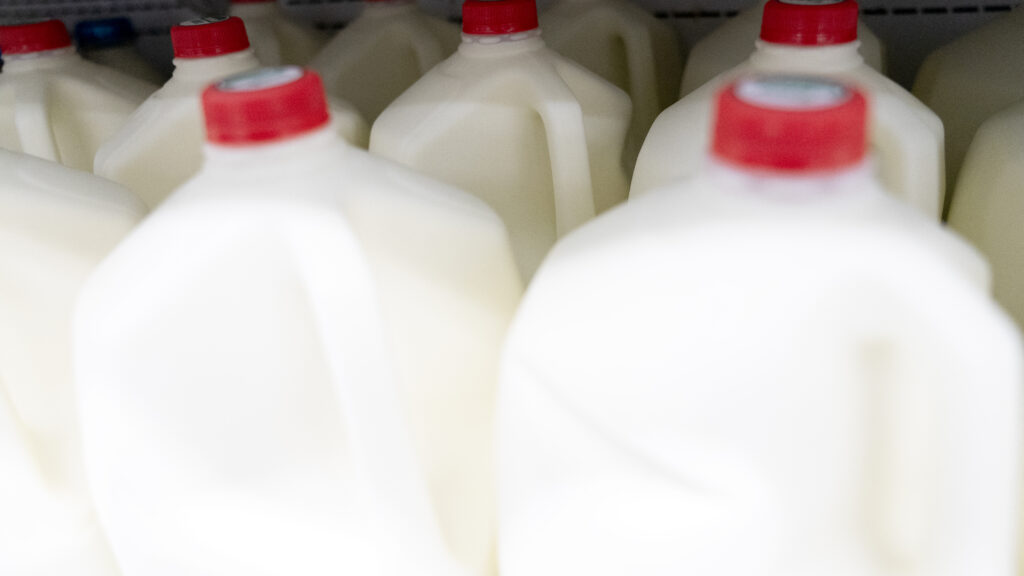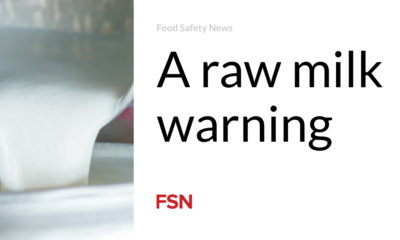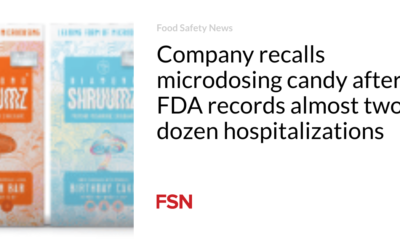Health
H5N1 bird flu particles found in pasteurized milk; FDA supports safety

WASHINGTON – Tests conducted by the Food and Drug Administration on pasteurized, commercially purchased milk have found genetic evidence of the H5N1 bird flu virus, the agency confirmed Tuesday. But the tests, performed by polymerase chain reaction, or PCR, cannot distinguish between live virus or fragments of viruses that could have been killed by the pasteurization process.
The agency said it tried to see if the virus can grow from milk containing evidence of H5N1, which is the gold standard test to see if there is a viable virus in a product. The lengthy statement released by the agency does not explicitly say that the FDA labs could not find live virus in the milk samples, but does say that its belief that commercial, pasteurized milk is safe to consume has not been changed by these findings .
“To date, we have seen nothing that would change our assessment that the commercial milk supply is safe,” the statement said.
The document contained many assurances, but few details about what had been done or found. It does not specify how many commercial samples were taken or from how many markets, nor does it indicate what percentage of samples were PCR positive for H5N1. The statement did not indicate whether the tests showed the amounts of viral genetic material in the milk were low or high.
In addition, the statement did not reveal whether the milk products were purchased in parts of the country where outbreaks have occurred, or in areas where cows have not been found to be infected.
The FDA did say it is testing milk from infected animals, in the processing system and off store shelves with the goal of producing a “large representative national sample” of the milk supply. In addition to assessing the safety of the supply, such a sample could allow the agency to gain a more robust picture of the spread of H5N1 among dairy cows nationally.
The agency emphasized that testing of commercially available milk is ongoing, and this includes efforts to distinguish any differences between different dairy products, such as cream and whole milk.
Michael Osterholm, director of the University of Minnesota’s Center for Infectious Diseases Research and Policy, called the findings “not surprising” and said PCR testing of milk could provide genetic evidence of a range of other pathogens that would have been killed by pasteurization , such as listeria or salmonella.
“I still believe the risk for live virus activity in milk is very low,” Osterholm said, although he noted the FDA statement lacked enough detail to demonstrate that. “It’s a bit of a stupid document.”
The FDA, which has for some time dodged questions about the work it does to assess the safety of milk supplies, said it conducted the commercial study as part of its efforts to assess the federal-state milk safety system in the context of the current outbreak of H5N1 bird flu in dairy cows in at least eight states across the country. As of Monday, 33 outbreaks in herds have been confirmed.
“Some of the samples collected have shown the presence of [H5N1] using quantitative polymerase chain reaction (qPCR) testing,” the FDA wrote in the statement.
It reiterated that it believes the pasteurization process is “very likely” to inactivate H5N1. “Data from previous studies that serve as the basis for the FDA’s current safety assessment for milk supplies demonstrate that pasteurization is very likely to effectively inactivate heat-sensitive viruses, such as H5N1, in milk from cows and other species,” the FDA wrote. The agency acknowledged that no studies have been published on the impact of pasteurization on H5N1 viruses in milk.
However, some academic centers have started to do so. John Lucey, director of the Center for Dairy Research at the University of Wisconsin-Madison, told STAT in an email that preliminary tests of milk conducted at the university showed that pasteurization is effective at killing the virus. But he declined to share further details. The U.S. Department of Agriculture “is currently conducting its own tests and I expect to hear from them soon about their pasteurization results, which should be considered the official tests,” he wrote.
The virus, which has been causing outbreaks around the world for more than a quarter of a century, had previously not been observed in cows.
Pasteurization is a process of heating raw milk to kill problematic microbes. There are several ways this can be done; some push the milk quickly through a hot, pressurized tube, while others heat the milk in large vats for extended periods.
The degree of destruction of microorganisms depends on the combination of temperature and residence times in the pasteurizer, as well as on the specific properties of the pathogen and how many of them are present in the milk. Higher levels of bacteria or viruses will take longer to kill. The minimum temperature and time requirements used by U.S. dairy processing plants are based on studies showing what it takes to kill the most heat-resistant pathogen in milk: Coxiella burnetii, the bacteria that causes Q fever.
“It’s a very tough microbe,” says Terry Lehenbauer, a bovine disease epidemiologist and director of the Veterinary Medicine Teaching and Research Center at UC Davis. “If we know that pasteurization can effectively kill that indicator organism, we therefore know that any other pathogens that are less durable will also be eliminated.”
The majority of milk in the US is treated with a high-temperature, low-time technique, which involves heating the milk to 162 degrees Fahrenheit for 16 seconds. Because it is a thermal process and does not involve physical removal of bacteria or viruses, dead genetic material that remains can be detected with a method that picks up small fragments of DNA or RNA, such as qPCR.
“It doesn’t really tell you anything about the vibrancy or ability of the virus to infect,” said Jennifer Cruickshank, a dairy extension specialist at Oregon State University who specializes in genomics. “It really just tells you that in the case of the influenza virus, this specific RNA fragment was present.”
To date, there are no published studies on the effectiveness of pasteurization on the H5N1 virus in milk. But researchers who spoke to STAT said inactivation of this virus is expected based on previous research showing it to be relatively sensitive to heat. A review published in 2022 Researchers in Germany found that at a temperature of 140 degrees Fahrenheit, flu viruses, including the H5N1 strains found in chicken meat, feces and eggs, can be reduced by four orders of magnitude within 30 minutes.
But milk is a completely different substance, a suspension of water, milk fats and proteins, whose complex kinetics can sometimes complicate the pasteurization process. Studies conducted by the USDA in the ‘1970s and ‘The 80’s found that those milk fats could act as protective bubble wrap around the virus that causes foot-and-mouth disease – making it harder for the heat of pasteurization to penetrate and inactivate the virus. There is no evidence that this is true for H5N1 viruses. And Lehenbauer pointed out that bird flu belongs to a class of viruses that are packaged in an envelope, which, counterintuitively, makes them much less hardy compared to non-enveloped viruses, such as the virus that causes foot-and-mouth disease. But as with any emerging pathogen, it’s worth knowing for sure.
“Pasteurization kills much stronger viruses than flu, so we expect it to work,” said Andrew Pekosz, a molecular microbiologist who studies respiratory viruses at the Johns Hopkins Bloomberg School of Public Health. “But it would be great to have the data.”
This story has been updated.













